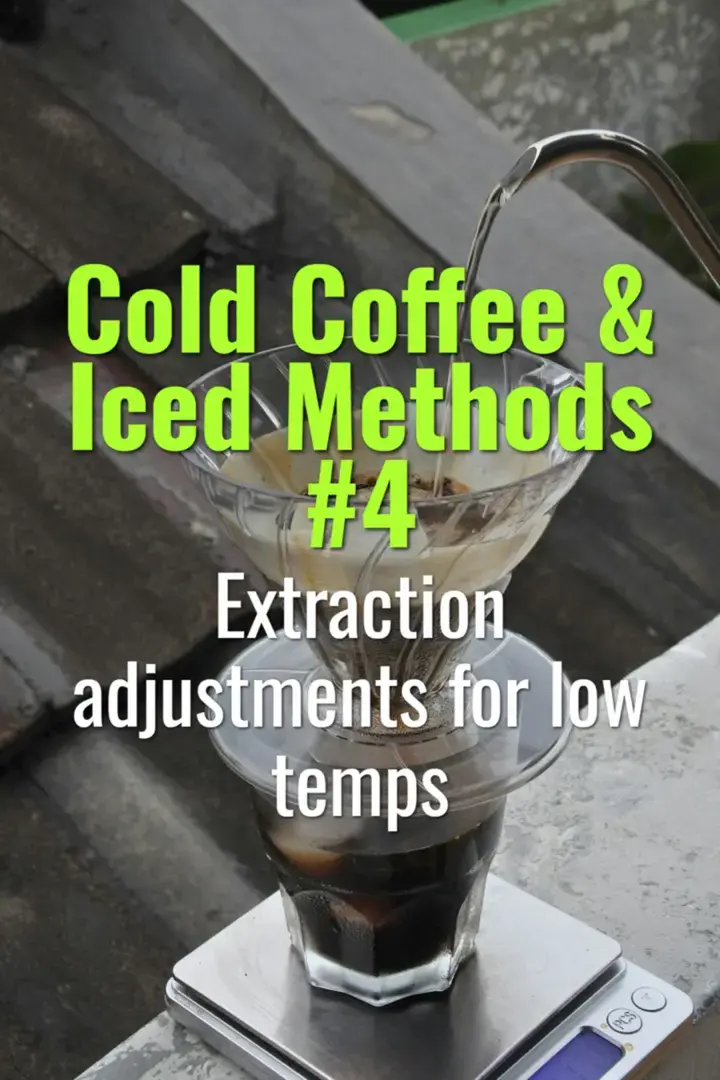Extraction adjustments for low temps
How to adjust brewing parameters to compensate for slower extraction at low temperatures in cold coffee methods.
- Coffee Basics Nerds
- 2 min read
Article 4 of 12 in Cold Coffee & Iced Methods/

Why Low Temps Affect Extraction
- Cold water (4–25 °C) slows down solubility of coffee compounds.
- Acids and aromatics extract faster than sugars and bitter compounds.
- Results in smoother, less acidic brews but can under-extract if not adjusted.
Key Adjustments
1. Brew Time
- Longer Steep: Cold brew immersion typically 12–18 hours to compensate for low extraction speed.
- Cold Drip: 3–12 hours depending on flow rate.
2. Grind Size
- Coarser Grind: Prevents over-extraction in long steeps, reduces sediment.
- Medium-Coarse: Enhances extraction for shorter or drip-style methods.
3. Brew Ratio
- Higher Dose: Cold brewing often uses stronger ratios (1:4–1:6 for concentrate) to offset reduced solubility.
- Diluted after brewing to desired strength.
4. Agitation
- Stirring grounds during steeping increases contact and accelerates extraction.
- Periodic agitation in immersion brews can improve balance.
5. Water Chemistry
- Soft, low-buffer water accentuates clarity in cold brew.
- High bicarbonate water mutes acidity even further.
Flavor Outcomes
- Without Adjustments: Risk of under-extracted, flat, watery brews.
- With Adjustments: Balanced sweetness, smooth mouthfeel, brighter fruit and floral notes preserved.
Practical Tips
- For immersion: taste at 12 hrs, extend steep to 18+ if needed.
- For drip towers: adjust drip rate if brew is too sour or too dull.
- Always filter cold coffee well to remove fines and improve clarity.
Summary
Low temperatures slow extraction, requiring adjustments in time, grind, ratio, and agitation. Properly adapted recipes produce smooth, sweet cold brews with vibrant aromatics instead of flat or underdeveloped cups.